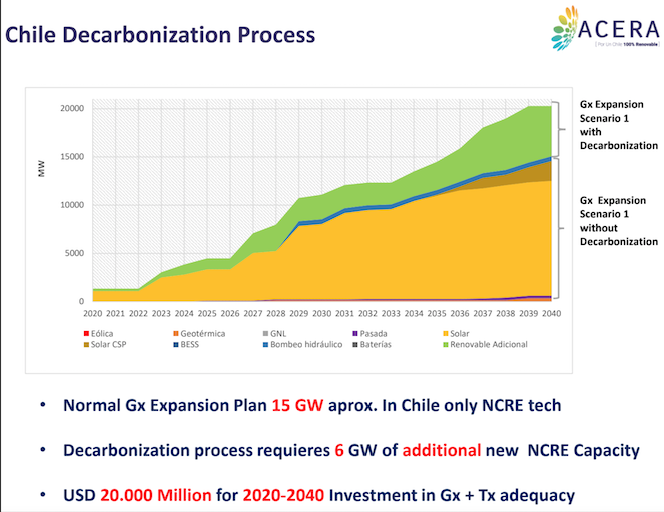Press Release
Chile needs to work on power system flexibility to reach 20 GW of renewable energy by 2040

Chile's decarbonization process requires additional growth of about 6 GW of non-conventional renewable energy in addition to the 15 GW already planned for the next two decades, according to Paola Hartung, vice-president of ACERA, the country’s association of renewable energy and storage companies.
"The decarbonization process in Chile is the biggest opportunity for the continued growth of renewable energy," said Hartung in a webinar examining the prospects for PV in the region. The event – “Latin America outlook for PV: Investment opportunities for solar energy in post COVID-19 scenarios” – was organized by the Global Solar Council in collaboration with Energia Estratégica and provided expert perspectives on important emerging markets (Brazil, Argentina, Chile, Colombia and Mexico).
Hartung observed that there would be no way today to build large hydroelectric plants at the required pace so it is a great time for other renewables to take center stage in Chilean electricity mix.
"Currently there is another opportunity for additional growth of approximately 6 GW more than the 15 GW of non-conventional renewable capacity that was expected to be installed by 2040," stated the ACERA vice president.
What are the challenges in this scenario? According to Hartung, it’s critical to work on how to supply the system in the hours when solar cannot be used to a large extent, because PV is expected to be the renewable source that will grow the most in the next 20 years.
Among other topics, she mentioned that work was under way on how to remunerate storage capacity and criteria for the expansion of transmission networks. That is why ACERA, an association that has been working for 17 years to promote renewable energy in Chile, is now developing concrete proposals to strengthen the system and ensure faster and more flexible growth that integrates renewables.

What about reaching about 20 GW of non-conventional renewables by 2040? What are ACERA’s projections for 2030 and 2050? To get Paola Hartung’s full perspective, see the webinar slides and listen to the event recording here.
![Global Solar Council [logo]](/static/images/gsc-logo-horizontal.svg)